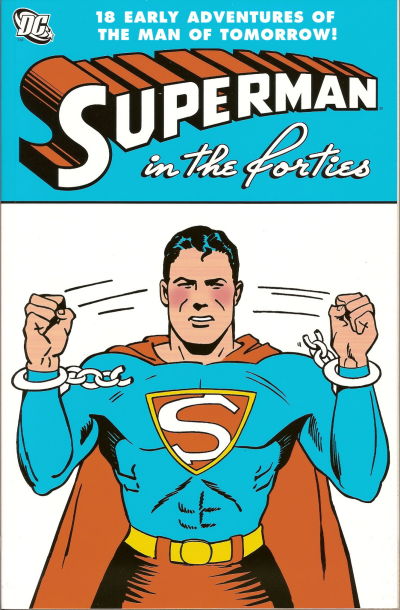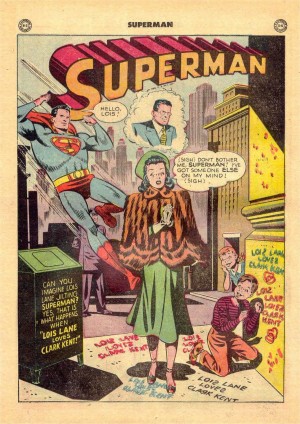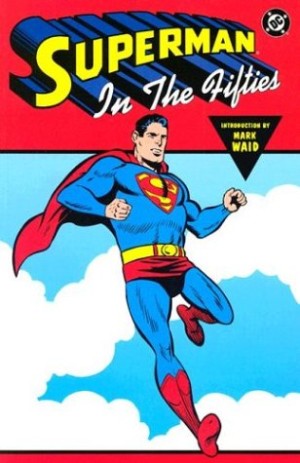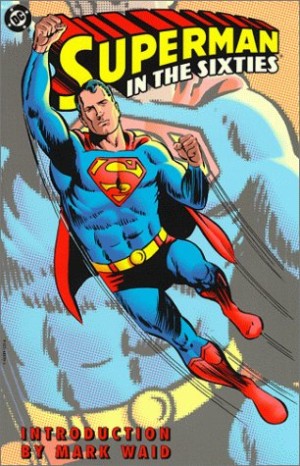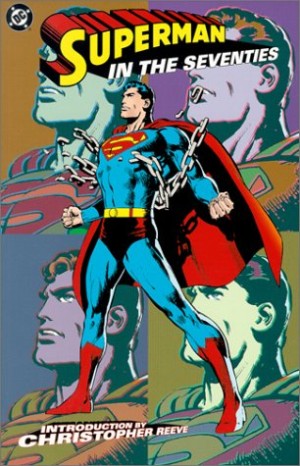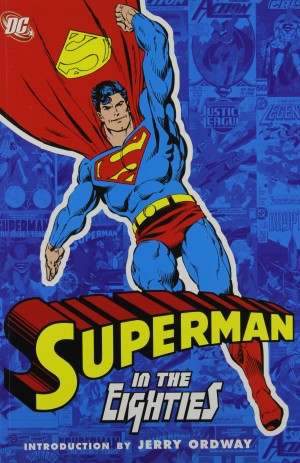Review by Frank Plowright
For those interested in Superman’s earliest days, when published in 2005 this was a valuable collection of material previously unavailable in graphic novel form other than in expensive hardcovers. As with the similarly designed books covering other decades, rather than opting for a chronological presentation, it allocates the material into themed categories, covering milestones, opponents and the American way, so skimming back and forth across the decade.
Superman made his first appearance in 1938 and material from his earliest comics is included, rendering the title slightly the misnomer, but historical interest should prevail. For much of the book this is the Superman able to leap tall buildings in a single bound rather than the man who habitually flies to planets across the galaxy, and that provides a tension absent from almost any other Superman stories since. He can still repel bullets, and is super-strong, but not invulnerable.
The opening work by Jerry Siegel and Joe Shuster has a kinetic appeal, and can still be mined by psychologists for wish-fulfillment aspects. The character is obvious as such, and masquerading as a journalist permits crusading for justice in a second identity, but can we read anything into Superman dealing with a wife beater in his first story? From that material it’s quite the leap to 1949 and Lois Lane attempting to transfer her infatuation with Superman to a mere mortal and settling on Clark Kent. It’s trivial and contorted, William Woolfolk’s story illustrating the lack of logic that would become an artform on Superman’s titles. At one point something’s needed to occupy Superman while other events take place, so there’s the inexplicable sight of a herd of cattle stampeding through Metropolis. Other milestones are the expanded 1948 origin of Superman by Bill Finger and Wayne Boring, a still notable example of concise plotting with an emotional pull, Superboy meeting Supergirl, and the introduction of Kryptonite.
The villains section isn’t as powerful. Yes, there’s the introduction of Luthor, the Toyman, and the Ultra-Humanite, a villain forgotten for decades, and Mr. Mxyztplk featuring with Lois Lane’s troublesome kid niece, but their stories are ordinary. Far more entertaining is Don Cameron’s morality tale of Superman dealing with con-man Wilbur Wolfingham, constructing a deterrent every bit as elaborate as Wolfingham’s plan to fleece the rich (and those he’d later empoy to deceive a snooping Lois Lane).
What’s loosely connected as ‘The American Way’ is a little more socially inclusive than it sounds. Siegel and Shuster concoct an inventive solution for Clark Kent to avoid military service during World War II, and show how he’d deal with Hitler and Starlin were he to exist in the real world. Superman is accompanied by Lois as he helps out around the world at Christmas, reuniting wartime refugees with their parents for one night, but the best is another tale by Finger and Boring, which has Superman performing good deeds while trailed by junior reporters. It’s a charmer.
It can’t be pretended that this early Superman material is as sophisticated as what followed, but the price of greater reality has been the loss of whimsy, charm, and often fun. Anyone in the mood to wallow in some nostalgic innocence could do far worse than look at Superman in the Forties.
NB some credits assigned post-date the book’s publication, and are sourced from the Grand Comics Database.
